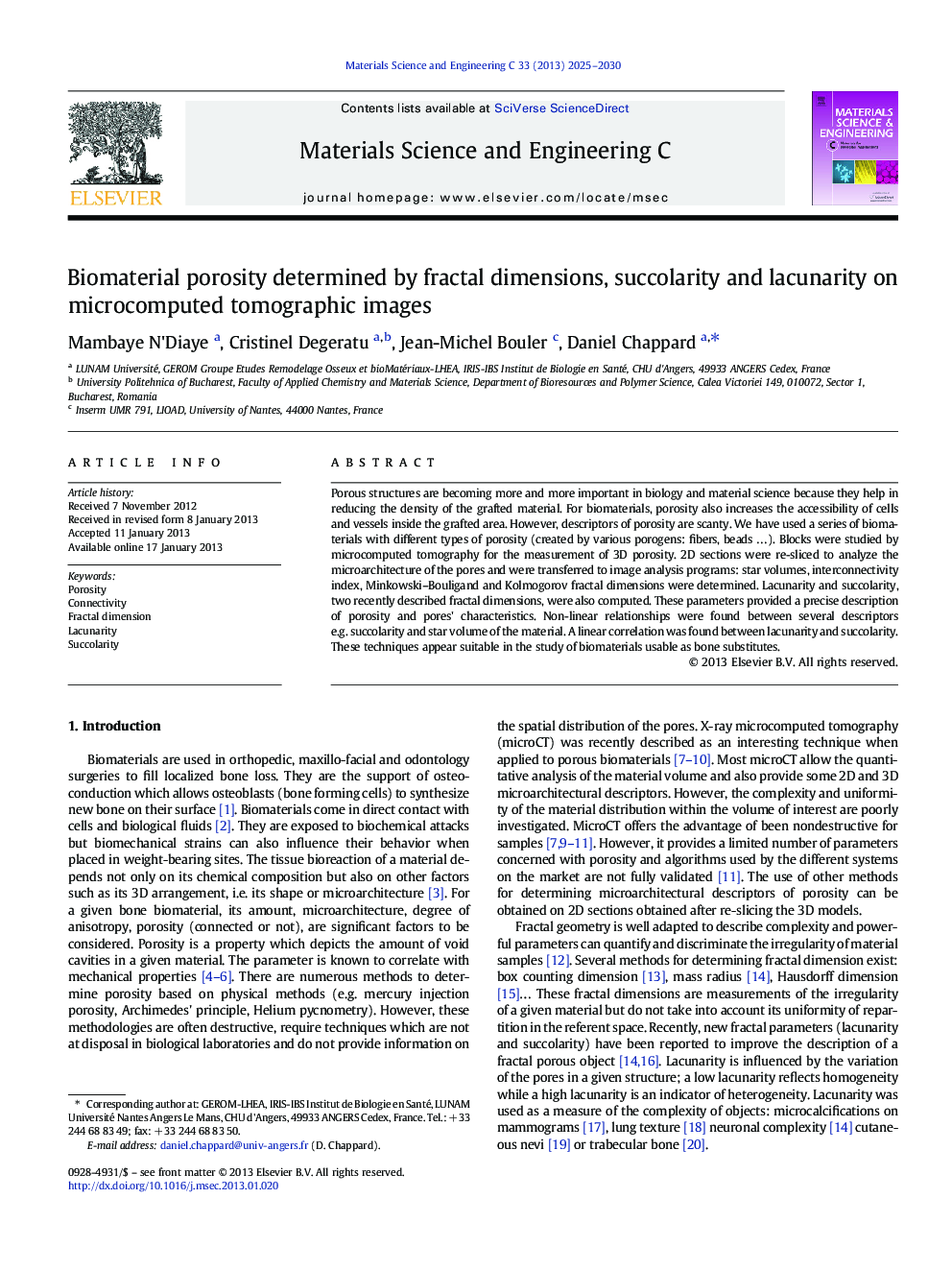| Article ID | Journal | Published Year | Pages | File Type |
|---|---|---|---|---|
| 1429404 | Materials Science and Engineering: C | 2013 | 6 Pages |
Porous structures are becoming more and more important in biology and material science because they help in reducing the density of the grafted material. For biomaterials, porosity also increases the accessibility of cells and vessels inside the grafted area. However, descriptors of porosity are scanty. We have used a series of biomaterials with different types of porosity (created by various porogens: fibers, beads …). Blocks were studied by microcomputed tomography for the measurement of 3D porosity. 2D sections were re-sliced to analyze the microarchitecture of the pores and were transferred to image analysis programs: star volumes, interconnectivity index, Minkowski–Bouligand and Kolmogorov fractal dimensions were determined. Lacunarity and succolarity, two recently described fractal dimensions, were also computed. These parameters provided a precise description of porosity and pores' characteristics. Non-linear relationships were found between several descriptors e.g. succolarity and star volume of the material. A linear correlation was found between lacunarity and succolarity. These techniques appear suitable in the study of biomaterials usable as bone substitutes.
Graphical abstractFigure optionsDownload full-size imageDownload as PowerPoint slideHighlights► Interconnected porosity is important in the development of bone substitutes. ► Porosity was evaluated by 2D and 3D morphometry on microCT images. ► Euclidean and fractal descriptors measure interconnectivity on 2D microCT images. ► Lacunarity and succolarity were evaluated on a series of porous biomaterials.
